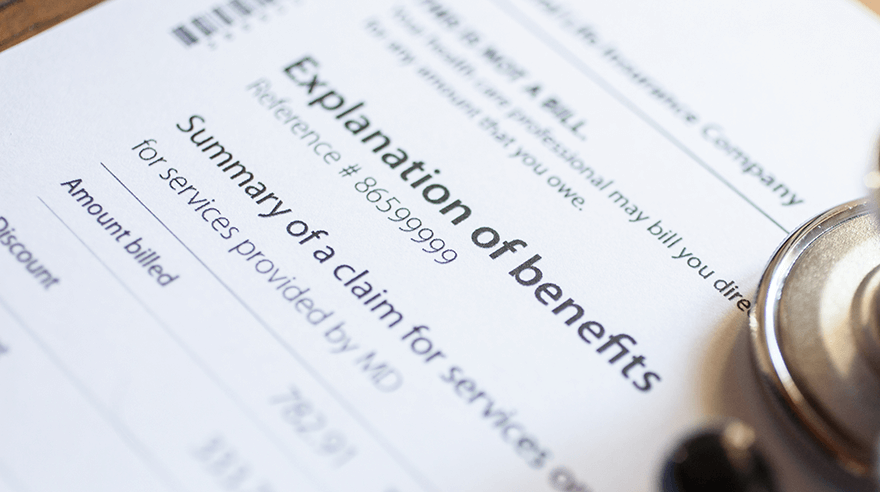If there’s one constant in the ever-evolving insurance landscape, it’s the need to meet a wide range of data security and regulatory compliance standards. While it’s true that security and compliance requirements shift and change, the need to protect sensitive consumer information will always be part of the game.
I’ve seen firsthand how the right print automation solution can help insurance companies communicate effectively with customers while safeguarding personally identifiable information (PII), minimizing the risk of data security breaches, and adhering to compliance standards, regardless of how standards may shift.
There are some minimum security standards or measures insurance companies need print partners to adhere to in service of protecting customer data. For example, annual security audits and certifications via independent third-party auditors can help verify the integrity of your data protection infrastructure — two of the more common third-party certifications include SOC-2 Type II and HiTrust.
24/7 monitoring of networks, systems, and processes as well as third-party penetration testing and ongoing employee security training including phishing exercises also need to be part and parcel of standard data security practices.
What complicates data security and compliance is the sheer volume of print materials that insurance companies produce. To help you create secure, compliant print communications, here are a few things I believe that are key for insurance companies to know about data security and compliance when partnering with a print provider.
Data transparency and visibility are mission-critical
Secure, trackable print processes help create an enhanced level of transparency and visibility at every stage of production. This transparency and visibility not only applies to a better understanding of the nature of the PII being used for communications like an explanation of benefits (EOB) or account statement, it also offers more insight into the users that handle materials that contain this data.
For example, a secure print platform makes it possible to restrict access to authorized users only, ensuring that only a select number of approved or credentialed users can release print jobs. This elevated level of authorization helps reduce the risk of data breaches and it ensures that large volumes of sensitive documents remain under the control of those who are absolutely critical to the print process.
From a regulatory compliance standpoint, secure and trackable print processes help create real-time visibility and transparency to provide a clear and documented trail of how consumer information is being processed and used. This also is beneficial in a downstream way in terms of auditing how PII is leveraged to ensure compliance with a variety of standards, including HIPAA, Gramm-Leach-Bliley Act, and state privacy laws, to name a few.
Advanced data security is essential
Advanced data security in print hinges on mitigating the risk of a third-party actor gaining unauthorized access to PII and using this information for identity theft on a larger scale. This helps protect against internal and external threats, creating a more secure print automation system that can execute print jobs at any quantity and quickly without the fear of disruption from data security breaches.
There are a couple of different elements insurers should expect from their print partners to help increase their data security protocols. A comprehensive data loss prevention (DLP) program can help monitor document handling, document access, and PII authorization and provide a real-time look at where documents are in the production process to prevent unauthorized document or data sharing.
A DLP program can also automatically identify and alert authorized personnel, and prevent data from being exfiltrated – either inadvertently or maliciously.
Secure print queues can prevent sensitive documents from sitting unattended on printers by holding documents in a secure queue until they’re ready for print. Similarly, document access logs make it quick and easy to track the users that access, edit, or print documents, creating an enhanced level of data security that keeps you compliant with regulatory requirements and reduces the risk of costly data breaches.
Simple, streamlined document access needs to play a part
The high volume of print materials insurance companies produce on a regular basis means insurers need to strike a fine balance between safe and secure print that’s also easy to create, access, and edit, especially for the production of time-sensitive documents.
This is where a secure, centralized, and automated print solution can be extremely valuable in allowing authorized users to access a library of approved document templates and workflows. This also helps streamline the production of personalized documents without opening the door for lapses in compliance or unauthorized access to private consumer data.
What’s more, this centralized location for approved documents needs to provide a user-friendly interface where authorized users can quickly access templates and incorporate approved consumer data to accelerate document creation. This is especially key when timely transactional mailings are required to maintain regulatory compliance.
Quick turnarounds can also be helpful for direct mail promotions, where building trust with your prospective customers can increase retention rates and build a positive association with your brand to help drive customer acquisition.
Quantum has years of experience working as a strategic print partner in the insurance industry. Our print automation solutions prioritize secure, compliant data use and print processes to help insurance companies create timely, engaging print materials that adhere to data security and compliance guidelines. Contact us to get started on your next print project.




